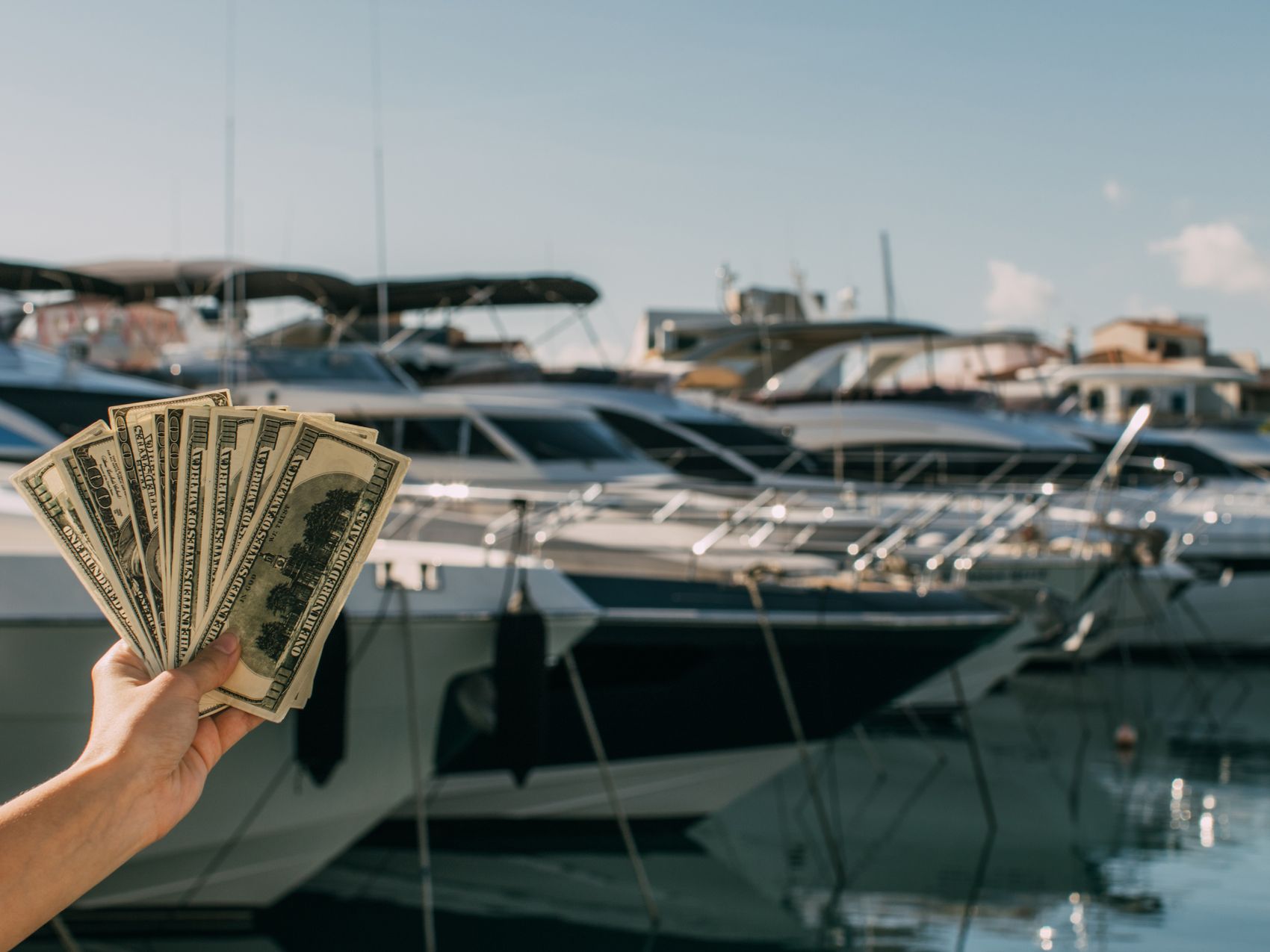Greece remains one of the world’s premier sailing destinations, and 2025 is no exception. With over 6,000 islands and islets (around 227 inhabited), Greece offers endless coastline, crystal-clear waters, and a rich tapestry of history and culture at every stop. Even better, Greece’s charter costs and marina fees have stayed relatively stable in recent years, making it an attractive alternative to pricier sailing hotspots. Prices in neighbouring countries (yes, we are pointing to Croatia :) ) have climbed, while Greek mooring fees remain modest. This value and fantastic cruising grounds have only increased Greece’s popularity among sailors. From the gentle, green Ionian Sea on the west coast to the windswept Aegean islands in the east, there’s a suitable sailing area for every skill level.
Seasonal Sailing Conditions in Greece
Let’s start with the weather, because nothing can make or break your sailing holiday quite like it. Greece’s summer sailing conditions vary by region, largely due to the famous Meltemi wind in the Aegean. Here’s an overview of what to expect from each part of the season:
June – Early Summer
By June, Greece is basking in warm weather without the extreme heat. Average daytime highs are comfortably warm (upper 20s to low 30s °C), and the sea is warming up. Wind patterns are moderate: in the Ionian Sea (west coast), you’ll get gentle northwesterly afternoon breezes known as the Maestro or Maestral, which reliably pick up around midday and calm down by dusk. The Aegean (east) starts to see the Meltemi wind beginning to stir, especially later in June, but it’s usually milder than in peak summer. June typically has very little rain, and visibility at sea is excellent. Overall, it’s a fabulous month for sailing with long daylight hours and not too many crowds.
July – August (High Summer)
The height of summer brings hot, sunny weather (temperatures often 30–35°C or higher) and the strongest winds of the year. In the Cyclades and Dodecanese islands (central and southeast Aegean), the Meltemi dominates – a dry, northerly wind that can regularly blow 15–25 knots and occasionally top 30 knots in the afternoons. It’s a relief on scorching days and provides exciting sailing for experienced crews, but it can make the sea state choppy and force itinerary changes if it blows for several days straight. The Meltemi is most persistent in July and August, often peaking at this time. In contrast, the Ionian and Saronic Gulf are much calmer – these areas are largely sheltered from the Meltemi. The Ionian Sea experiences lighter NW winds (Force 2–5 most days) and is known for flat seas and a predictable daily wind cycle (calm mornings, moderate afternoons). Rain is practically nonexistent in mid-summer, and skies are typically cloud-free. Note that because this is the busiest season, popular harbours can get crowded, so arriving early at anchorages is wise.
September – October (Late Season)
Early autumn is a wonderful time to sail in Greece. September still feels like summer – warm air (25–30°C in early Sept, gradually cooling later) and sea temperatures around 24°C. Crucially, the fierce Meltemi winds begin to calm down by late August and into September, making Aegean sailing more relaxed. You’ll enjoy more moderate breezes, often from the north, still, but generally gentler and more predictable. By October, the Meltemi has fully subsided (ending around the end of September, after that it will completely disappear), and winds may blow from the south or west on some days at a mild Force 2–4. The weather in October is mild and pleasant: average daytime temperatures range 20–25°C, with cooler evenings (a light jacket is a good idea). There’s still plenty of sunshine, though late October can bring a few rain showers or the odd thunderstorm as the season transitions. The sea remains warm enough for swimming (around 21–23°C in October). Many sailors love September–October for its combination of comfortable conditions and thinner crowds – it’s the shoulder season sweet spot where you get the best of both worlds. Just keep an eye on the forecasts in case of any autumn weather fronts, and note that daylight hours do shorten by late fall.
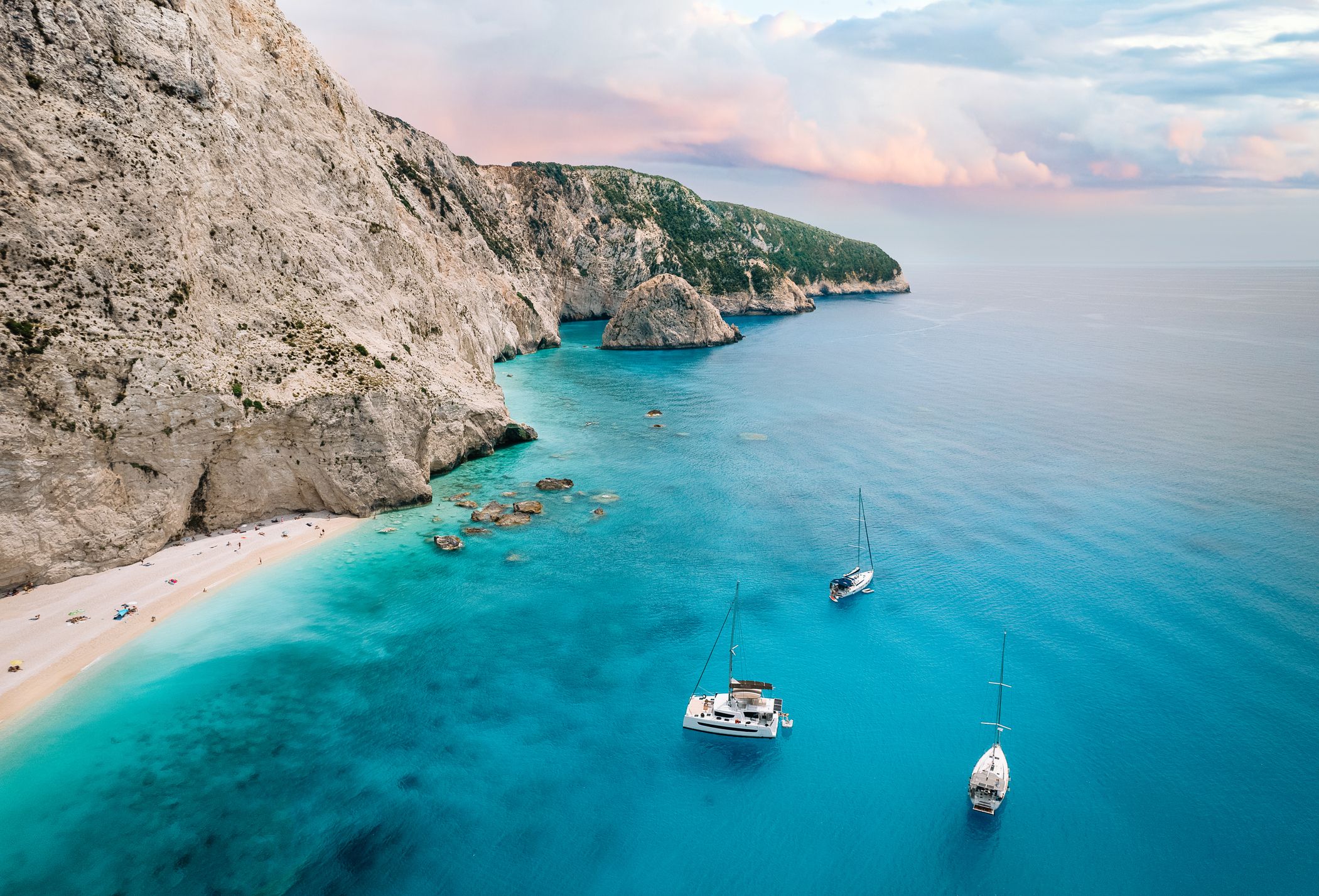
Regional differences in sailing conditions
In summary, the Ionian Islands (Corfu, Lefkada, Kefalonia, etc.) offer gentle winds and protected waters throughout summer, ideal for those wanting stress-free sailing. The Aegean islands (Cyclades, Dodecanese) see stronger winds; the Cyclades in July–August are best tackled by more experienced crews due to the Meltemi’s force. The Saronic Gulf (near Athens) and Argolic Gulf are relatively sheltered, with weaker winds (great for easy sailing or family trips) except occasionally in mid-summer when even they feel a bit of Meltemi breeze. By late season, virtually all regions calm down, opening the door for exploring areas like the Cyclades under gentler conditions once the Meltemi fades. Always check a reliable marine weather forecast (such as the Hellenic National Meteorological Service or apps like PredictWind/Windy) during your trip, especially in the Aegean, to plan around any strong wind days.
Greece may be one country, but when it comes to sailing conditions, it’s practically a whole archipelago of microclimates — what’s true in one area might be completely different just a few islands away.
Marina & Mooring Costs in Greece in 2025
One of the pleasant surprises for many sailors is that marina and mooring costs in Greece are quite affordable, especially when compared to popular sailing destinations like Croatia or Italy. In 2025, this remains true – Greece offers excellent value for berthing fees, contributing to its growing popularity. Here we’ll break down typical costs in high season (June–October) and give a few examples, then compare them briefly to Croatia to highlight the differences.
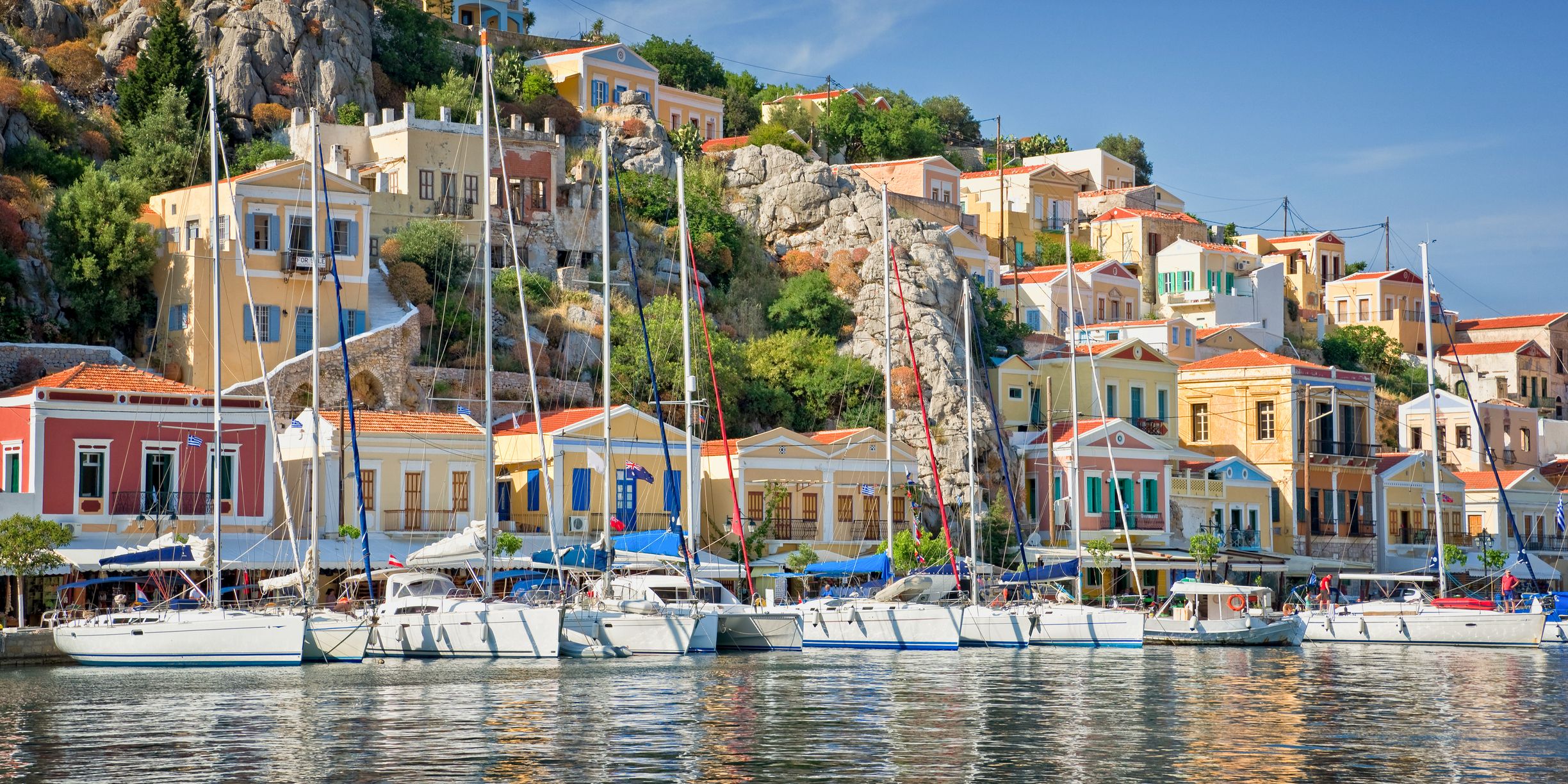
General cost range: In Greece, a night in a marina or at a town quay for a 12-meter (~40 ft) monohull can cost anywhere from €20 to €60 on average, depending on the location and facilities. Many smaller island harbours are €20–€30 or even free for visiting yachts, especially if they are simple municipal quays with minimal services. Even the larger, full-service marinas tend to charge well under €100 per night for a 12 m boat in peak summer. By contrast, in Croatia, a similar 12 m yacht might pay on the order of €80–€150 per night in a marina during high season, and often even more in the most sought-after marinas. Modern facilities and high demand have driven up Croatian prices, whereas Greece has kept prices relatively low to encourage nautical tourism.
Let’s look at a few specific examples of 2024/2025 high-season marina rates (for a 12 m / 40 ft monohull):
-
Athens – Alimos Marina: Approx. €30–€35 per night for a 12 m in summer. (Alimos, also known as Kalamaki, is one of the largest marinas in Greece, but it’s run by the municipality, hence the very reasonable fee). Despite being a major charter base with full services (water, electricity, security), its fees are almost unbelievably low – around €34 for a 13 m yacht. This is just a fraction of what you’d pay in a big city marina elsewhere in the Med.
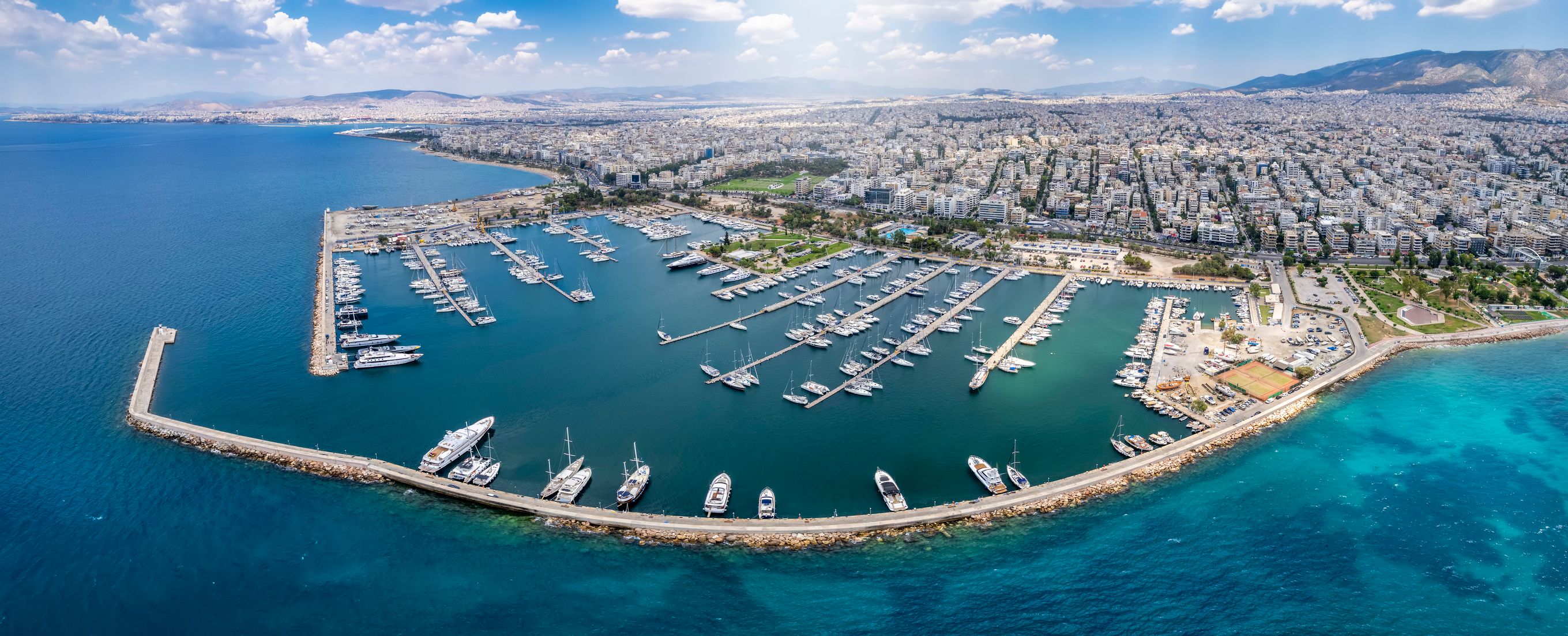
-
Corfu – Gouvia Marina: Around €100 per night for 12–13 m in peak season. Gouvia is a private marina with extensive facilities (restaurants, pool, fuel dock, etc.), and for a 45 ft boat, the high-season rate is roughly €100 (lower in shoulder months). Still, compare that to, say, an equivalent marina in Split, Croatia, where it could be €130–€170 a night, and you see the difference.
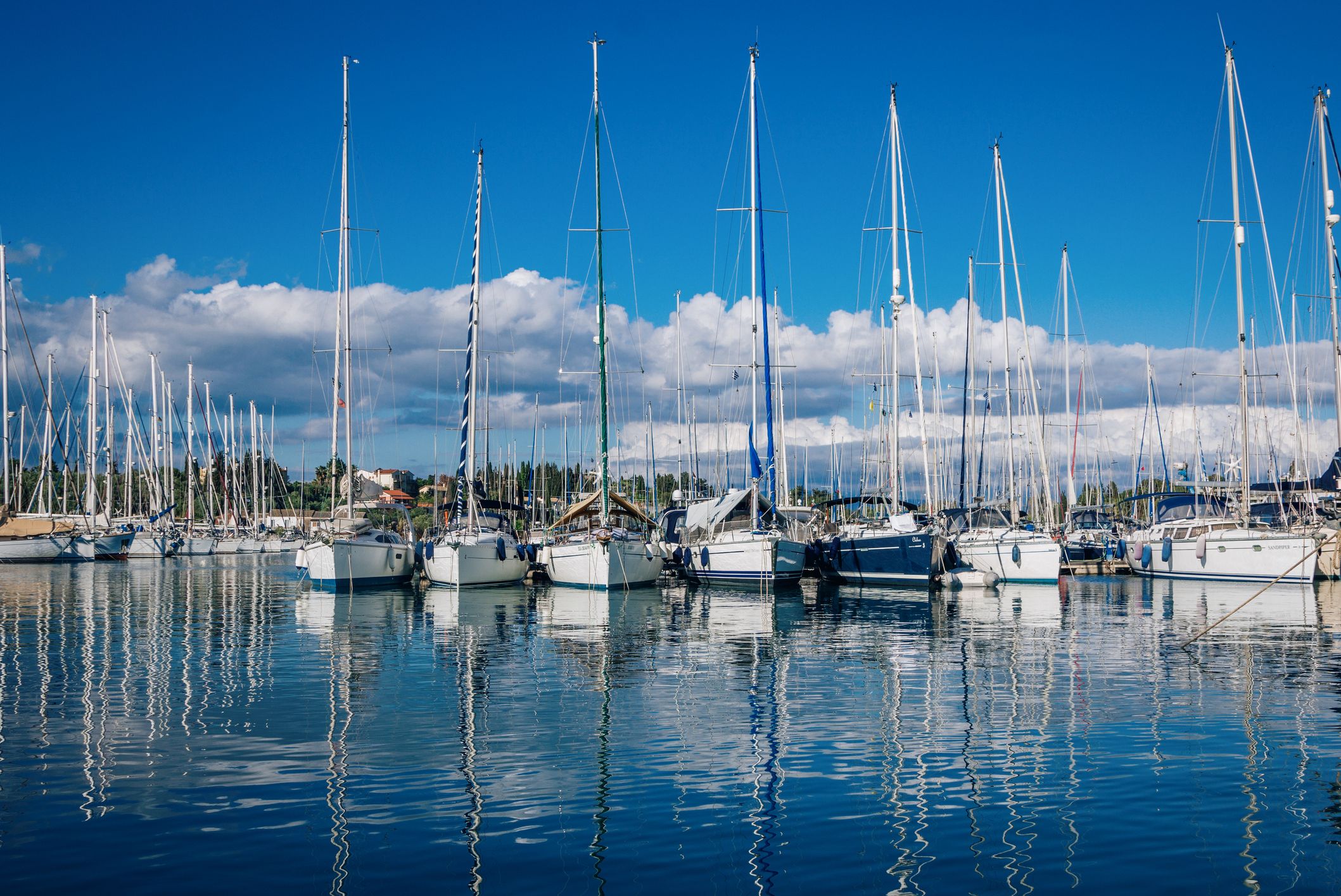
-
Dodecanese – Rhodes Marina: About €55–€60 per night for a 12 m (Rhodes’s main marina is modern and fairly priced). Notably, some Greek marinas don’t even change their rates between low and high season – Rhodes Marina, for example, lists the same price year-round for a given size.
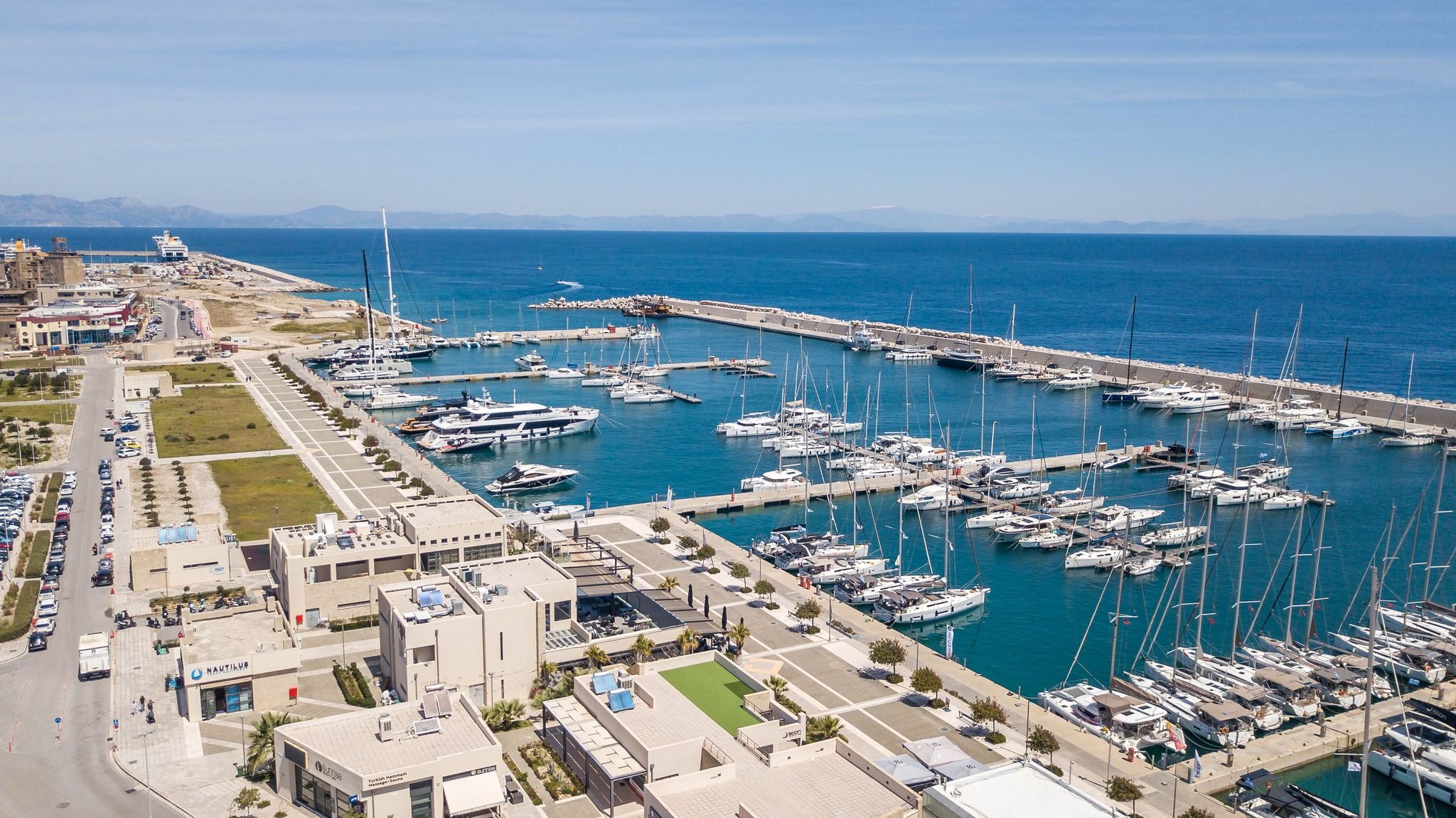
-
Preveza (Ionian coast): Around €60–€70 for a 12 m in high season at the marina. Preveza is a common stop for Ionian charters and a haul-out spot; its marina fees are moderate. Meanwhile, municipal quays in Preveza town (or nearby Lefkada town quay) can be as low as €10-15 a night, proving that if you don’t need fancy facilities, Greece can be very cheap.
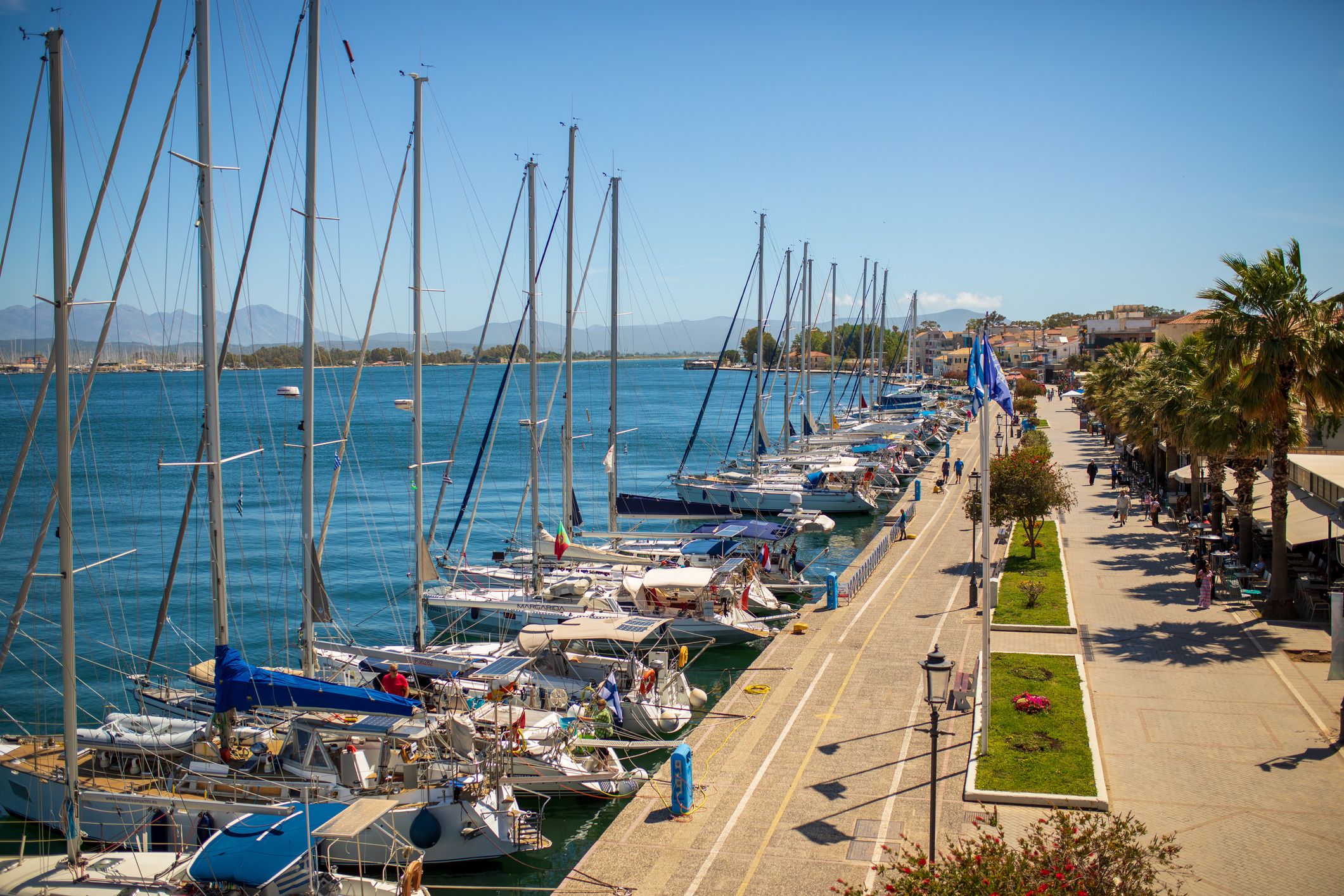
-
Santorini: Santorini doesn’t have a full marina for yachts; most charter boats don’t overnight there due to a lack of shelter and the expense of the few moorings available. If you pick up a private mooring in Santorini’s caldera, expect to pay a premium (perhaps €80+). But this is an outlier – most Aegean islands either have a low-cost town pier or you anchor off for free.
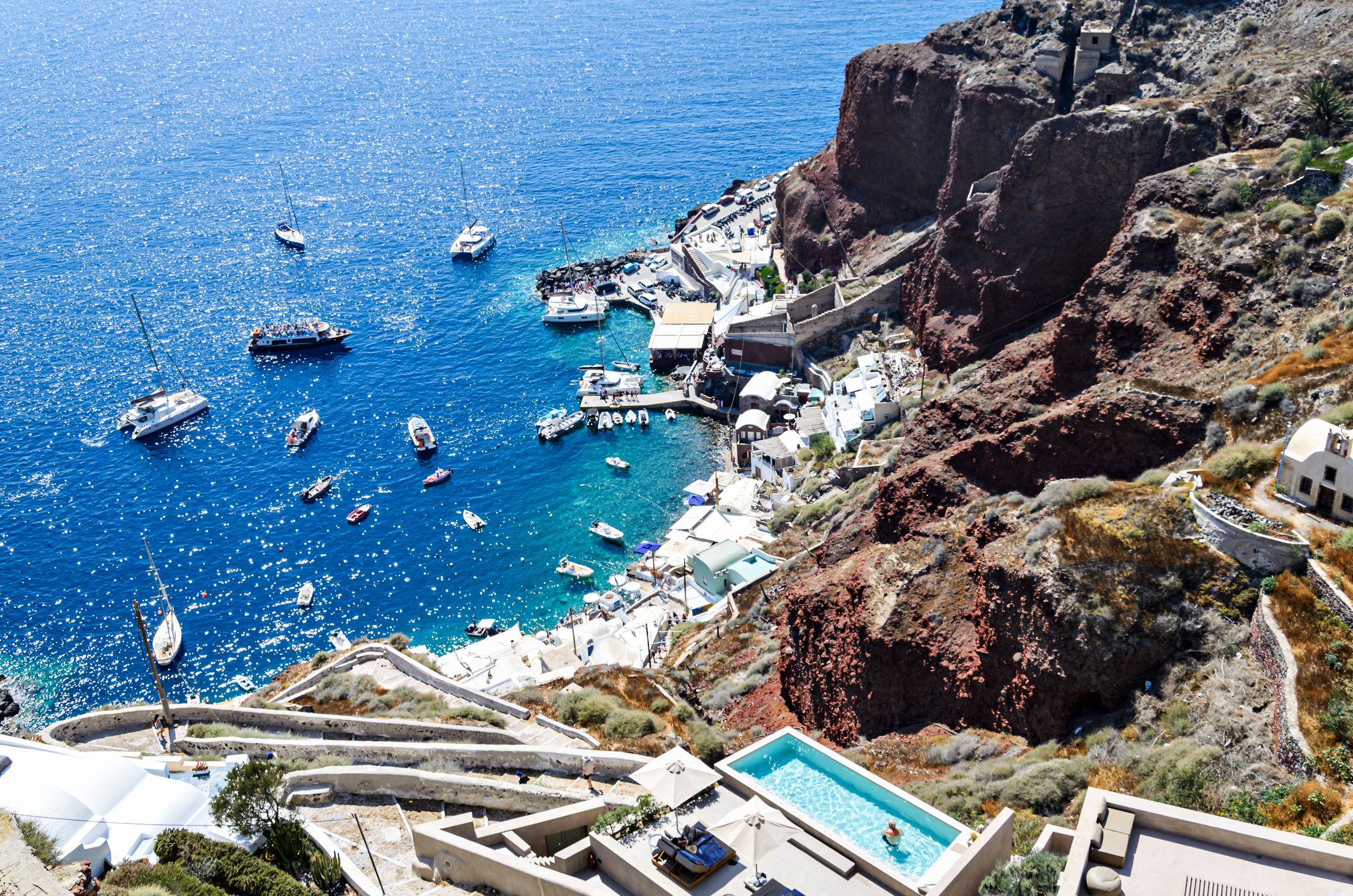
-
Small island harbours (Aegean or Ionian): Typically €0 to €20. For instance, recent cruisers report paying just €15 in Paros (for water and electricity on the town quay) or €0 in places like Symi’s Pedi Bay (if anchoring and tying to rocks). In Hydra, the fee was about €20 for a night stern-to the quay (though Hydra’s tiny port fills up fast, and rafting up is common). In Kos town harbour, around €30. These are ballpark figures, but the point is many places are extremely affordable. Often, if a harbour has no water/power or official management, they might not charge at all – the locals are just happy you’re patronising the tavernas.
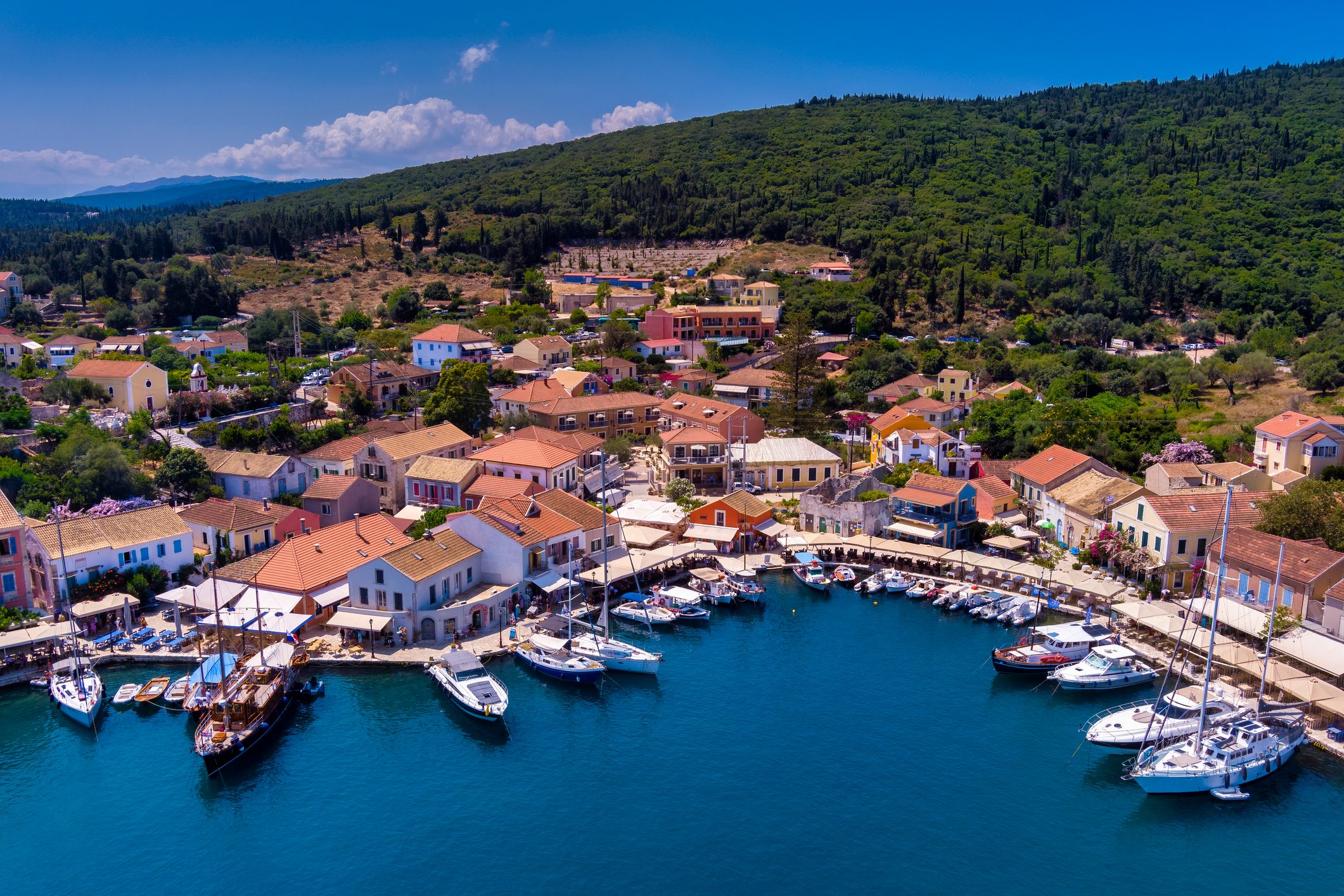
Furthermore, catamarans usually incur a surcharge (often +50% of the monohull rate) because of their beam – still, a 40 ft cat in Greece might pay €50–€80 in many places (versus easily €150 in Croatia).
Why are Greek fees lower?
Partly because many facilities are older or municipally run, and Greece historically views sailing as part of normal life, not solely a luxury tourism business. There’s an understanding that visiting yachts bring revenue to local shops and restaurants, so prices are kept invitingly low. In Croatia, by contrast, a lot of marinas are newer private ventures (like the ACI marina chain) with significant investments to recoup, leading to higher fees. This difference is noticeable to sailors’ wallets. For example, a 13 m yacht in Split’s ACI Marina in high season is around €172/night, whereas the same yacht in Athens (Alimos) or Rhodes might be €34–€60/night – a huge disparity. Even a mid-range marina like Gouvia (Corfu) at ~€100 is considerably cheaper than, say, Marina Dubrovnik at €130+ for that size.
Anchoring/mooring fields: Another cost factor: in some countries, taking a mooring buoy in a bay can be expensive (for instance, Croatia’s national park moorings can cost €40–€50/night). In Greece, anchoring is free, and mooring buoys are not very common except in a few spots. Often, if a taverna lays mooring buoys, they’ll be free if you eat at the restaurant (or a small fee like €10). So, you can spend several nights at anchor at no cost at all, interspersed with an occasional marina night to refill water and charge batteries – an economical approach many enjoy.
To sum up, Greece’s stable and affordable pricing for mooring is a big part of its appeal. You can cruise for two weeks and spend very little on berthing, especially if you favour anchoring out or town quays. With Greece’s 2025 prices holding steady, it’s not hard to see why many sailors are choosing the Greek Islands over more expensive Adriatic or Western Med destinations.
Sailing Regulations & Anchoring Rules in Greece
Before setting sail, it’s important to understand Greece’s current sailing regulations and best practices for mooring and anchoring. The good news is that Greece has streamlined many formalities in recent years, making it relatively straightforward for charterers and visiting yachtsmen. Below is a summary of key rules and tips as of 2025:
Charter Paperwork & Legal Requirements
If you’re chartering a yacht through a company (like Boataround’s partners), most of the necessary paperwork will be handled for you. Bareboat charterers in Greece typically need to have at least one certified skipper (with an ICC or equivalent license) and a co-skipper/crew member who can sign a self-declaration of competency. The charter company will ensure your crew list and boat papers are in order. All recreational boats cruising in Greek waters must carry a permit to cruise – for Greek-flagged or EU boats, this is the DEKPA (Cruising Log) or a Transit Log for non-EU vessels. These documents are obtained from the Port Authority (Port Police) and should be kept on board. Since 2019, Greece has also required a cruising tax (known as TEPAI or TPP) for all boats. The tax is modest for charter users (often built into charter fees), but for reference, it costs private boat owners about €200–€400 per year for boats under 12m (larger boats pay more per meter). If you’re bringing in your own yacht, you’ll need to pay this tax monthly or annually via the online system here or at Port Police – e.g. a 10–12 m boat pays €33 per month or €400 for the year. The good news is that many old bureaucratic requirements have been relaxed: you no longer need to obtain Port Police permission each time you arrive or depart a harbour or get a transit log stamped at every port. Now, you generally only deal with Port Authorities for initial entry clearance, to pay fees/taxes, and if there’s an incident or emergency. Always keep your boat registration, insurance papers (with the Greek-mandated liability coverage), crew list, and passports readily available for inspection. But day-to-day, charter sailors will find formalities minimal – you can freely sail between Greek ports without repetitive check-ins.
The good news? If you book through Boataround, most of these formalities are taken care of by our charter partners. That means you can focus on planning your route and enjoying your trip — not navigating Greek bureaucracy.
Mooring Practices (Mediterranean Mooring)
In most Greek ports and harbours, you’ll be doing stern-to mooring (Med mooring) at town quays or marina piers. This means you drop your anchor a boat-length or two off the quay and then reverse in, securing your stern lines to the dock. Unlike some other countries, lazy lines (pre-laid mooring lines) are rare on public docks in Greece, so your anchor is essential for holding the bow. Basic med-mooring etiquette applies: set your anchor well (at least 3:1 to 5:1 scope, depending on space), and be mindful of adjacent boats’ anchor lines to avoid crossing. Harbour depths are often 3–5 m near the quay, and many have a mix of sand and weed on the bottom, so let the anchor dig into sand patches if possible. Greek locals and fellow sailors are usually friendly and will lend a hand or offer advice if they see you’re unfamiliar with a harbour.
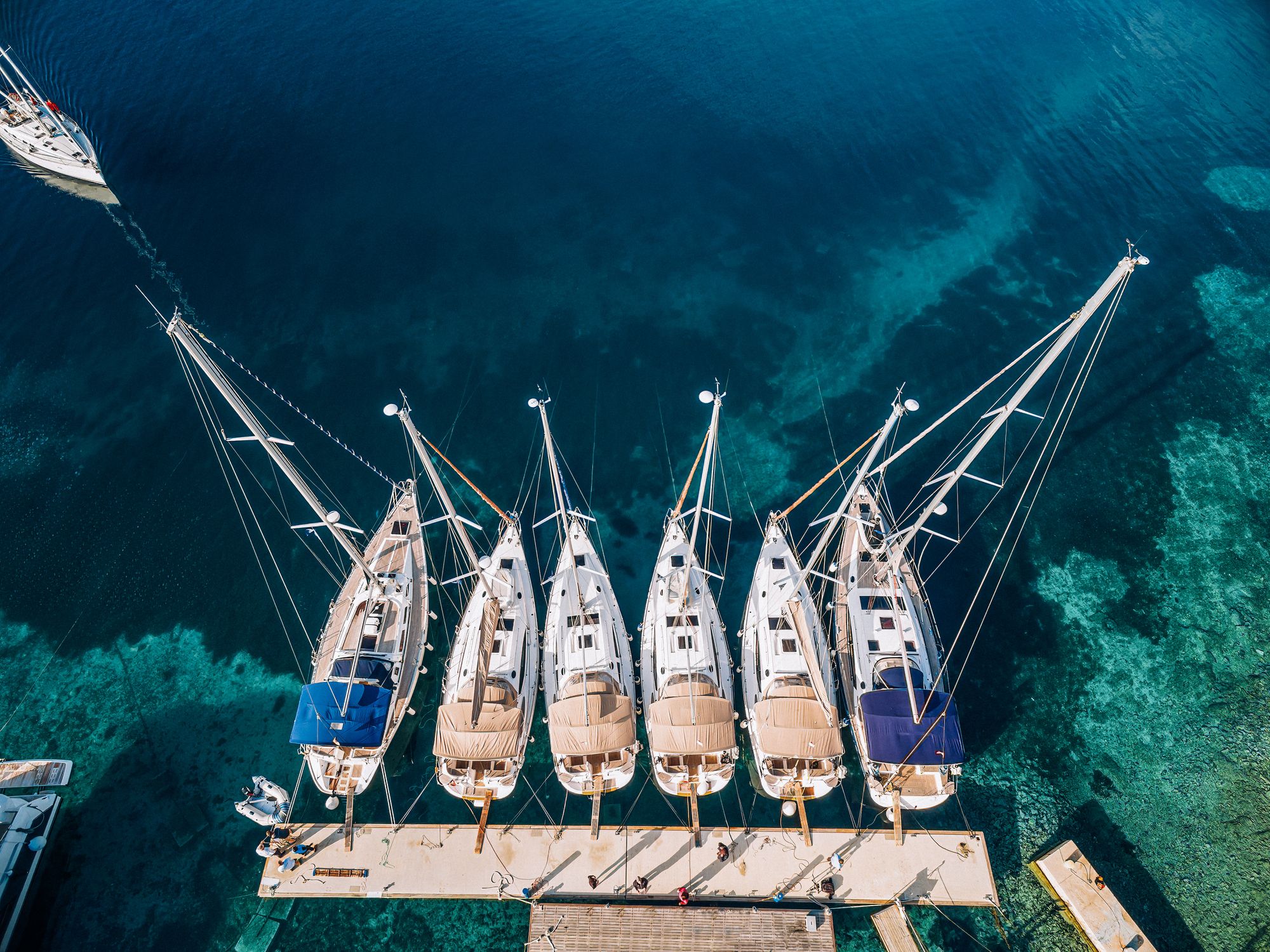
Tip: Have your fenders out and a long stern line ready on each side as you approach; in busy ports, you might even “raft” (tie side-to) next to another boat if directed, though this is more common in peak season overflow situations - but be prepared :). In smaller coves without docks, the common practice is to anchor in the bay and take a long line ashore to a rock or tree to hold position (this prevents swinging and lets more boats fit in a cosy anchorage). Be prepared with a sturdy 30–50 m line for this “long-line” mooring technique in case you need it.
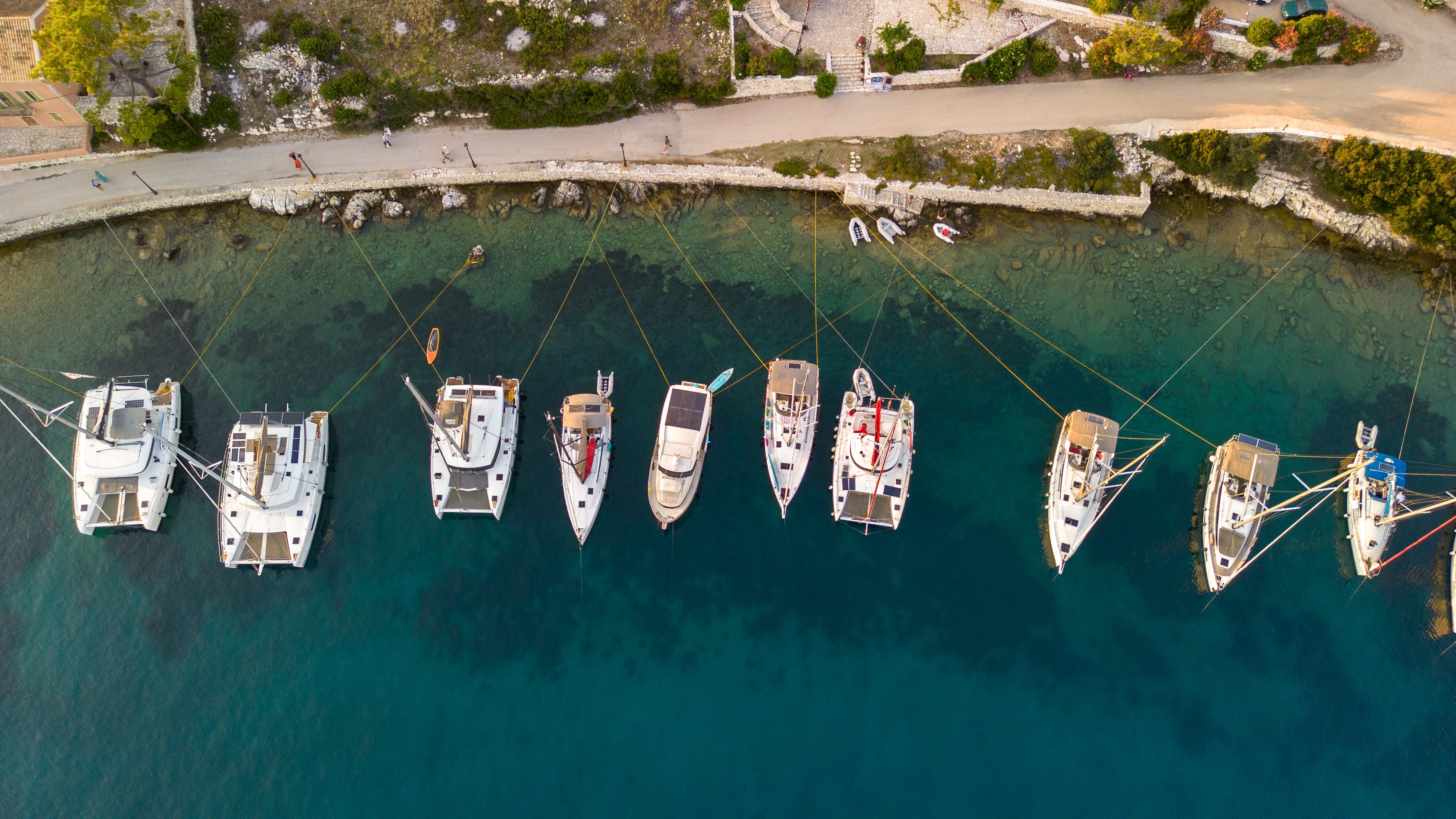
Anchoring Rules & Protected Areas
Greece offers tremendous freedom for anchoring – you can drop anchor in most bays and coves at will, as long as you’re outside swimming-only zones and not obstructing harbours or ferry routes. The general rule is to anchor responsibly: avoid damaging Posidonia seagrass meadows (look for patches of sand to drop your hook) and respect any local signage about restrictions.

While Greece doesn’t yet have as strict Posidonia anchoring bans as, say, Croatia or France, Posidonia oceanica is a protected species under EU law and Greek regulations, so eco-friendly anchoring is encouraged. In fact, some marine protected areas have installed moorings to prevent anchor damage – for example, around Gyaros Island in the Cyclades (a Natura 2000 marine reserve), you’ll find eco-mooring buoys that visiting yachts are required to use instead of anchoring, to preserve the seabed.
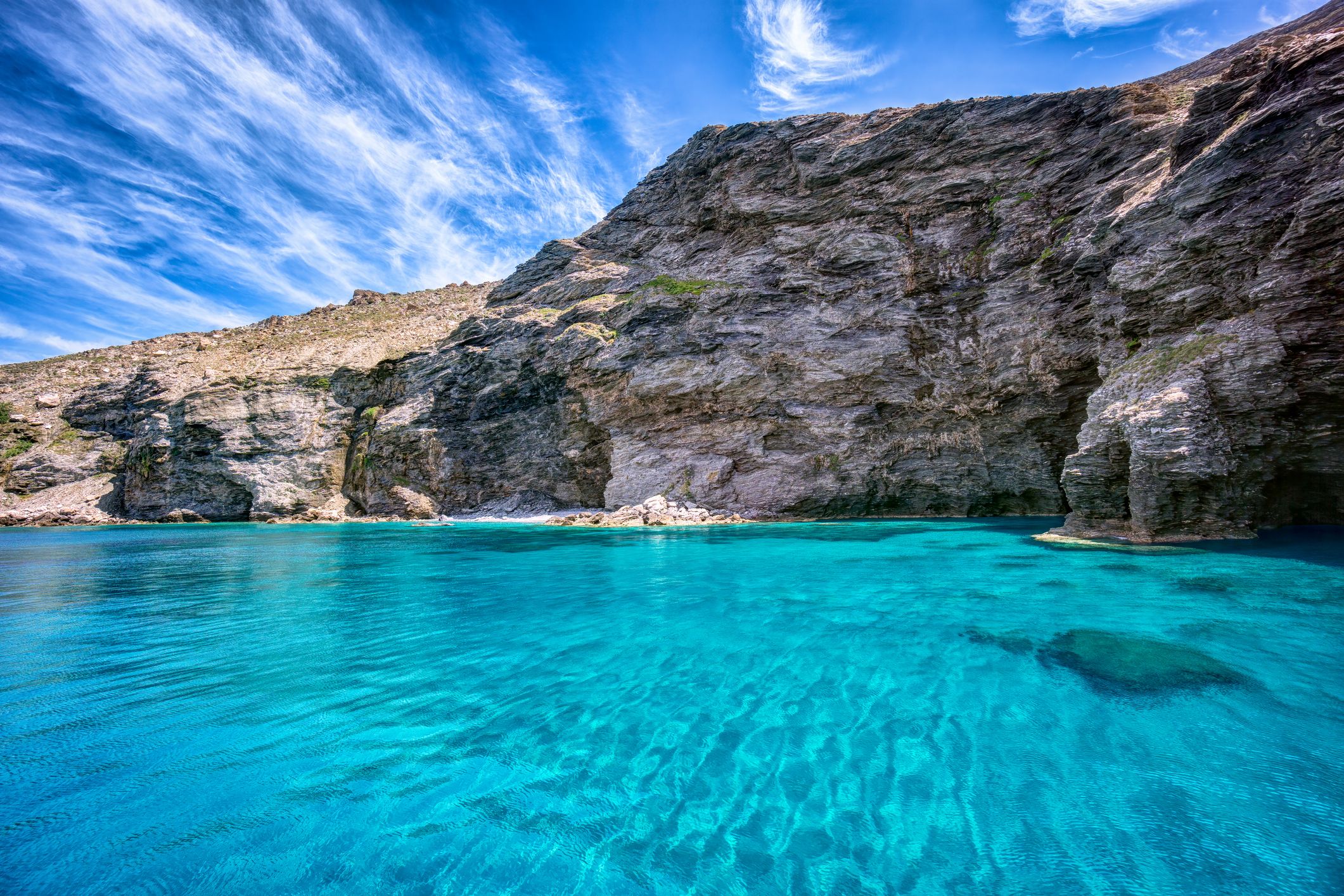
Pay attention to charts and cruising guides for any such areas; they are few, but important. Greece has National Marine Parks and Natura 2000 protected zones in several regions. Notable ones include the National Marine Park of Alonissos and Northern Sporades (home to the endangered monk seal), the National Marine Park of Zakynthos (protecting sea turtle nesting areas in Laganas Bay), and parts of the Cyclades (Gyaros, as mentioned, and surrounding islands), among others. In these areas, special rules apply. For example, in the Alonissos/Sporades park, the core zone near Piperi Island is strictly off-limits (no approach within 3 NM), and overnight stays are only allowed in a couple of designated bays (like Planitis Bay and Agios Petros on Kyra Panagia Island) for safety and environmental protection. In Zakynthos’s turtle sanctuary, anchoring is forbidden in the shallow nesting zones, and speed limits apply to protect turtles. Always look for signage or information when entering a protected area – often there will be marker buoys or notices about restrictions (e.g. no anchoring, no fishing, no diving, or daytime-only access). The Port Police and park authorities do patrol these areas, and fines can be imposed for violations, so it’s best to follow the rules – and of course, it helps preserve Greece’s natural beauty. Outside of official protected zones, anchoring is generally unrestricted. Just avoid anchoring in submarine cable areas (marked on charts) or in front of busy ferry ports.
Another thing to note: free anchoring versus paid moorings – in some very popular bays (typically in the Ionian and the Sporades), you might find private mooring buoys laid by tavernas or local operators. Using these might incur a fee (or an expectation that you dine at the taverna). If unsure, ask locals or check a cruising guide app like Navily or Navionics for notes on a bay. But broadly, anchoring in Greece is cost-free and a joy – a big difference from some neighbouring countries where mooring buoys or anchoring permits are the norm.
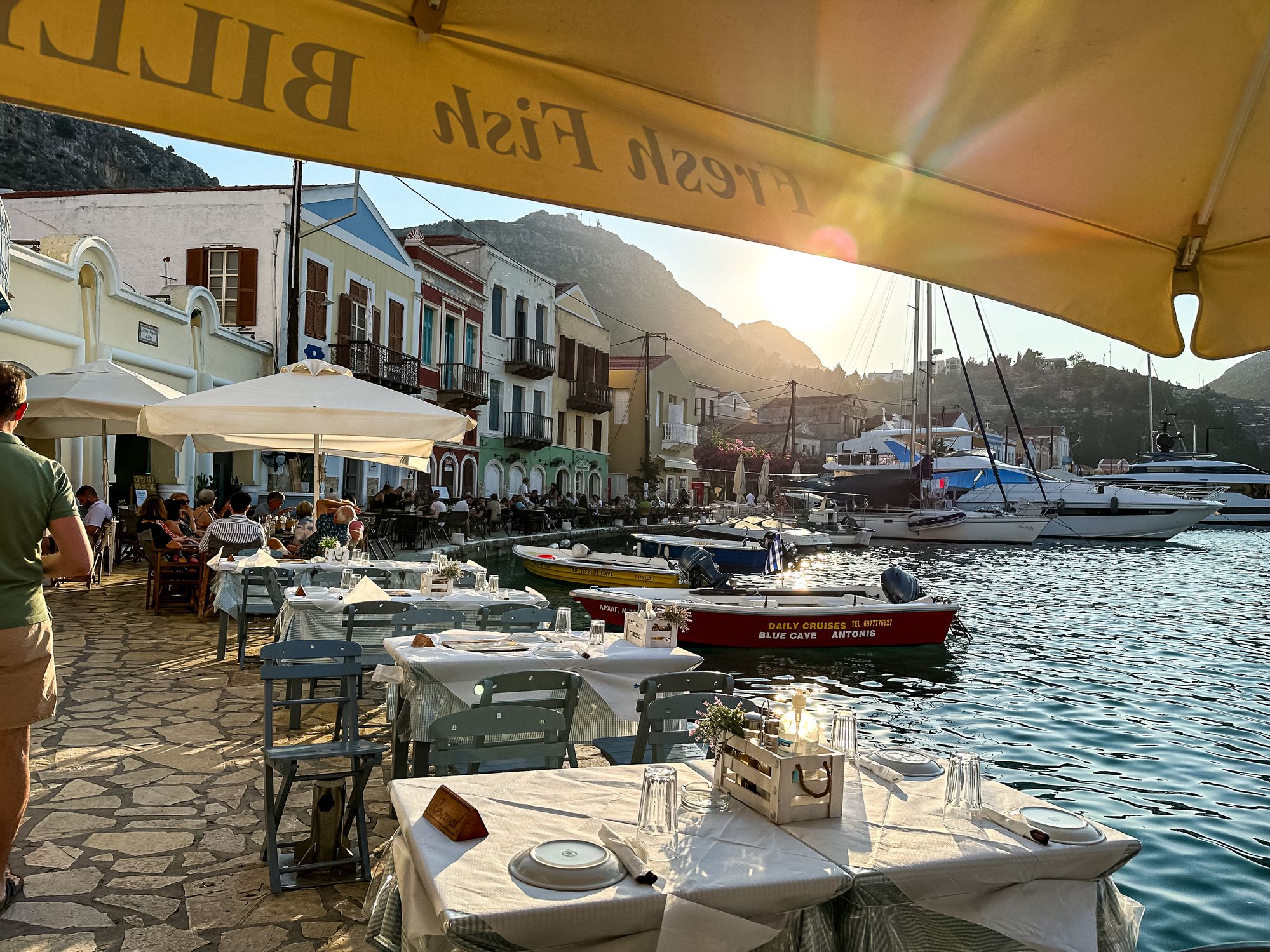
Marina Fees & Port Police
While anchoring out is free, staying at a dock or marina may involve a fee. Greece is known for its inexpensive (often nominal) port fees. Many smaller town quays managed by the local municipality charge just a token fee of a few Euros per night – it might be around €10–20, or even nothing at all on occasion. These fees are usually collected by the Port Police or a harbour master who may visit your boat in the evening or morning to issue a receipt. It’s a good idea to keep some cash (Euro) on hand for this. Larger private marinas (for example, marinas in Athens, Lefkas, Gouvia in Corfu, etc.) have higher fees (see the next section for specifics) and are usually paid at the marina office. Aside from nightly mooring fees, Greece doesn’t nickel-and-dime you – there are no daily cruising permits or special taxes beyond the aforementioned TEPAI. If you’re sailing under a foreign (non-EU) flag, note that you must officially clear in/out of Greece at designated ports of entry and may be limited in how long your boat can stay in EU waters (Schengen area rules and temporary importation apply). But for the typical charter sailor flying into Athens or one of the islands and picking up a Greek-flagged charter yacht, formalities are simple. Just remember to carry your license (they do check that the skipper has an appropriate certificate before handover) and follow standard maritime rules (like showing anchor lights at night, not sailing in restricted military areas, etc., though those areas are well-marked on charts).
In short, Greece offers a very sailor-friendly environment. Basic seamanship and respect for rules will keep you out of trouble. The combination of relaxed regulations, helpful local authorities, and ample safe harbours makes Greece ideal for an intermediate bareboat skipper looking to broaden their experience.
Top Anchorages and Bays in Greece
Starting from Lefkada
For the Ionian Islands, our local partner Sightsea Yachting recommends the following must-visit anchorages:
-
Meganisi – A charming island just east of Lefkada, known for its crystal-clear waters and tranquil coves. The villages of Vathi and Spartochori on Meganisi’s north side offer well-sheltered harbours with ample yacht moorings and quaint waterfront tavernas.
Mooring Fees: Typically around €10–€20 per night, depending on your boat’s size and which port you use (fees are modest due to limited facilities). -
Kalamos – A peaceful, less-crowded island southeast of Lefkada that exudes traditional Greek charm. The main harbour in Kalamos village is small and fills up in high season, but arriving yachts are often greeted by George, the friendly taverna owner, who acts as an informal harbour master. He’ll help you tie up and may raft boats together when it’s busy – in return, many crew dine at his restaurant (a Kalamos tradition!).
Mooring Fees: There’s usually no official fee here – berthing is generally free if you visit the local taverna (water and power are limited or unavailable at the quay). -
Ithaca (Ithaki) – Famous as the home of Odysseus, Ithaca boasts lovely bays and villages for anchoring. Vathi, the island’s capital, is a large natural harbour almost hidden from the sea, offering good protection and amenities. On the northeast coast, Kioni is often called one of the most picturesque villages in the Ionian, with three old windmills guarding its horseshoe-shaped bay and colourful houses and tavernas lining the waterfront.
Mooring Fees: Around €15–€25 per night on town quays (varying by season and whether you use water/electricity). Both Vathi and Kioni have municipality-run quays where fees are minimal (often just a few euros, plus extra for utilities). -
Kefalonia (Fiskardo) – The northern port of Fiscardo on Kefalonia island is a cosmopolitan stop beloved by sailors. Fiscardo was one of the few towns spared in the 1953 earthquake, so its Venetian-era pastel buildings remain intact. Strolling the harbour, you’ll find chic boutiques and excellent tavernas, and often see luxury yachts moored alongside local fishing boats.
Mooring Fees: Approximately €20–€30 per night. In Fiscardo, tying up stern-to the quay is generally free of charge, but during peak season, a small fee or tip may be collected, especially if you use water or power (which are available via tokens). Expect higher fees on private mooring lines if you opt for those, but overall costs here remain reasonable for the amenities and vibrant atmosphere.
Starting from Athens/Alimos
From Athens (Alimos Marina) in the Saronic Gulf, Athenian Yachts and their skipper Panos Zervas recommend these top anchorage spots:
-
Klima Bay (Aegina) – On the south coast of Aegina Island, Klima is a tranquil bay known for its superb beach and clear water. It’s a popular lunch-stop anchorage for charters leaving Athens, offering a refreshing swim and snorkelling. There’s a simple beach cantina open in summer, but no town or port facilities here – you’ll be anchoring off in sand.
Mooring Fees: None (free anchorage). Simply drop an anchor in the bay (good holding in sand) and enjoy the natural surroundings. -
Ancient Epidaurus (Sunken City) – Along the west coast of the Argolic Gulf near Epidavros, you can anchor off a beach to explore the Sunken City of Epidaurus, a unique underwater archaeological site. The submerged ruins lie just 2 meters below the surface, very close to shore, making it an amazing snorkelling and shallow diving spot. As you swim over the site, you can see ancient wall foundations and even large amphorae on the seabed – an unforgettable experience as colourful fish dart among the relics. (This “sunken city” was a small 2nd-century Roman villa settlement, accidentally discovered in the 1970s.) On land, the modern village of Ancient Epidavros is nearby, and the famous ancient theatre of Epidaurus is a short ride away if you have time to visit.
Mooring: Anchor in the bay outside the swim area – there are no mooring fees here. Use your dinghy to get closer to the snorkel site or the beach. (Tip: The bay is well-protected in calm weather, but avoid overnighting if strong north winds are forecast.) -
Poros – Poros is a lively island town separated from the Peloponnese by a narrow channel, making its main harbour very sheltered. Yachts can Med-moor along the town quay or at laid moorings; water and electricity hookups are available through the municipal port authority. The town itself offers a great evening scene, with a picturesque waterfront crowned by a hilltop clock tower.
Mooring Fees: Typically €40–€50 per night if you use water and electricity (you’ll pay by purchasing a pre-paid card for utilities). The base mooring fee without utilities is much lower, often under €10 for an average 40-foot yacht, which makes Poros popular. Expect the higher end (~€50) only if you’re a larger yacht taking full services. Arrive early in peak summer, as Poros is a favourite weekend getaway for Athenians and the quay fills up. -
Spetses – An elegant, pine-wooded island with rich maritime history, Spetses is farther south (toward the Argolic Gulf) and is worth the sail from Athens. Its main harbour (Dapia/New Harbour and the Old Harbour together) is very small and demand is high. Spetses’ old harbour sits in a deep, naturally sheltered inlet but offers limited dock space – in fact, finding a berth in July-August can be almost impossible on weekends due to visiting yachts and local excursion boats. If you plan to stop here, it’s best to arrive by early afternoon (before 14:00) on a weekday. Even then, you may end up anchoring off and taking a tender in. The charm of Spetses is strolling its car-free waterfront (only horse-drawn carriages and motorbikes) and enjoying the upscale yet laid-back vibe.
Mooring Fees: Around €40–€50 per night (including water and power if obtainable). In practice, if you do secure a quay spot, overnight fees are roughly €20–€30 (e.g. ~€25 for a mid-sized yacht), and water is available via a fuel dock or port office. There are no shore power columns in Spetses Old Port, so plan accordingly. Many sailors opt to anchor in the wide bay of Zogeria or other coves and visit Spetses town by dinghy if the harbour is full. -
Hydra – One of the Saronic crown jewels, Hydra Island has a stunning crescent-shaped harbour town with stone mansions climbing the hillsides. However, Hydra’s port is very small and notoriously crowded in high season – yachts often end up triple-parked side by side, with tangled anchors. A strong ferry and water-taxi traffic also creates a surge and noise. In summer, it’s actually recommended not to moor inside Hydra port overnight because of the chaos and risk of damage (for example, a late-arriving ferry or fishing boat may jostle your lines). Instead, many skippers choose to anchor outside the harbour at Mandraki Bay or other nearby coves and use their dinghy or a water taxi to go ashore. This way, you can still enjoy Hydra’s car-free town (famous for its donkeys and vibrant art scene) without the stress.
Mooring Fees: If you do get a spot on the Hydra quay, fees are modest (under €15), but there are no services (no water/electric). Anchoring outside is free – just ensure your anchor is well-set and keep clear of the ferry lanes.
Tip: Arrive at Hydra very early in the day if you want a chance to dock; by midday the tiny harbour is usually full.
-
Aegina (Moni Islet & Perdika) – On your return toward Athens, Aegina offers more great stops beyond the main marina. Perdika is a quaint fishing village on Aegina’s southwestern tip with a small harbour; it makes for a charming evening stop with its tavernas on a promontory overlooking the sea. Just offshore is Moni Islet (sometimes called Monastiri, as it’s owned by a monastery) – an uninhabited islet designated as a nature park. Moni is fantastic for a daytime anchorage: you can anchor on the islet’s north side in turquoise water and swim to the beach. On Moni, you might encounter semi-wild deer or peacocks roaming free under the pine trees!. There are no buildings except a small beach cantina (open in high season).
Mooring Fees: None at Moni (it’s an anchorage). In Perdika, if you grab a spot on the tiny quay, the fee is just a few euros (when collected), or you might instead pay by enjoying a meal at a harbourfront taverna. Both options provide a peaceful end to your Saronic sailing itinerary, with a genuine Greek atmosphere.
Plan Your Greek Sailing Adventure – Handy Route Ideas
Thinking about where to point the bow? Below are seven tried-and-tested itineraries from the Boataround blog, each summed up in a sentence or two so you can pick the vibe that suits your crew. Click through for the full day-by-day breakdown, local tips, and harbour notes.
-
7-Day Sailing from Athens (Saronic Gulf) – Start and finish at Alimos Marina, hop to Aegina for pistachios, Hydra for postcard-perfect quays, and Poros for easy Med-mooring and sheltered coves. Ideal first-time Greek route.
-
6-Day Mykonos & Central Cyclades – Mix Mykonos nightlife with the quiet anchorages of uninhabited Rinia, sandy Naxos bays and charming Paros villages; a great taster of the Cyclades without Meltemi overkill.
-
Gentle Sailing in the Mystical South Ionian – Flat seas, short hops and emerald coves around Lefkada, Ithaca and Kefalonia—perfect for families or crews easing into stern-to mooring.
-
Laid-Back West Aegean / Saronic Loop (7 days) – Cruise Angistri, ancient Epidaurus, relaxed Poros and quiet swim spots near Aegina; minimal Meltemi exposure, maximum taverna time.
-
Six Days Around Kos (Dodecanese Highlight Reel) – From medieval Kos Town to volcanic Nisyros and pastel-painted Symi, with snorkel stops on tiny islets—culture plus crystal-clear anchorages. →
-
Sail the Sporades in 7 Days – Skiathos nightlife, pine-scented Skopelos bays, and monk-seal territory in the Alonissos Marine Park; a lush, greener slice of the Aegean.
-
Relaxing 7-Day Trip Around Emerald Corfu (North Ionian) – Venetian harbours, blue caves and olive-lined anchorages around Corfu, Paxos and Antipaxos—easy sailing with stunning swim stops.
Pair one of these routes with the pricing intel and anchoring pointers above, and you’ll have a smooth, budget-smart cruise plan ready to go. Kαλά ταξίδια – safe travels and fair winds!

Lagoon 440 | Strawberry

Jeanneau Sun Odyssey 469 | Lemon

Afaia 485 | Afaia


